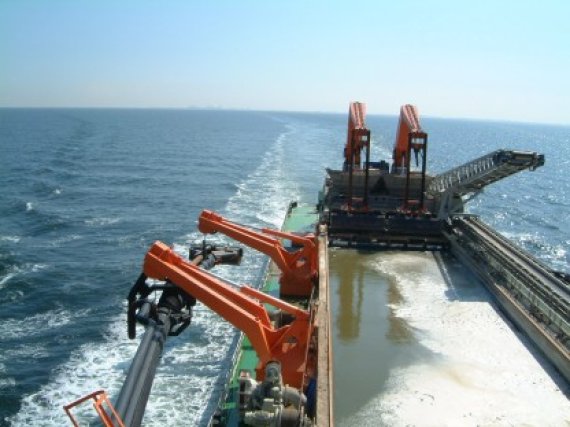<Photo: trailing suction hopper dredger at North Sea>
Every year, large amounts of sand are excavated in the North Sea for construction projects and coastal replenishment. Usually, trailing suction hopper dredgers remove a layer of sand two metres thick. However 20 metres of sand was removed from a single site for the construction of Maasvlakte 2, resulting in a deep pit.
De Jong, who works at Imares, investigated the ecological effects of this intervention. He counted the number of soil fish and soil creatures living in and on the sea bed, such as sea urchins, worms and shellfish. His research was part of the ‘Building with Nature’ knowledge and innovation programme.
There was far more life in the sand excavation pit than De Jong had expected. Two years after the excavation work, the biomass of the soil life had increased by a factor of 7 to 12, while the biomass of soil fish — especially plaice — had increased by a factor of 20.
De Jong has therefore found mainly positive ecological effects from the deep sand excavation in the North Sea but he does not want to commit himself yet. ‘You need to investigate this over a longer period. For instance, it’s possible that an anaerobic atmosphere develops in the bed of the pit, which would have an adverse effect on soil life.’ What is more, the full ecological recovery of such a deep sand pit takes decades whereas the surface excavation pits that are only two metres deep recover in four to six years.
De Jong recommends also examining the ecological effects of surface and intermediate pits in order to be able to weigh up the options properly. He has also drawn up ‘design rules’ giving the depth to which sand can be excavated in the future in the North Sea bed. That varies per location and depends on the water flow rate.
Maarten de Jong will defend his thesis on 8 April. His supervisor is Han Lindeboom, professor of Marine Ecology.

